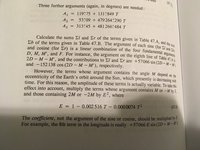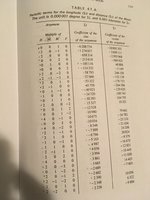Christian.
New member
- Joined
- Sep 1, 2018
- Messages
- 19
Hello everyone
I am working on an equation to solve for the position of the Moon, which I intend to plug into a very lengthy solar/ lunar eclipse calculation. I am using the formula provided by Jean Meeus in the book Astronomical Algorithms. I understand how the table/ equation works but I am confused on if I include the lines in the table that have no coefficient as + sin(argument) or just not include it at all in the calculation. The instructions in the book either don’t explain what to do at this point or I am miss reading something. This is my first time reading an equation written this way. I will note that I have been to the math and physics/ astronomy professors at my university and they agree it is not that clear on what to do. I will add pictures of my current interpretation and the text itself. Can anyone help? Thank you.
Christian
I am working on an equation to solve for the position of the Moon, which I intend to plug into a very lengthy solar/ lunar eclipse calculation. I am using the formula provided by Jean Meeus in the book Astronomical Algorithms. I understand how the table/ equation works but I am confused on if I include the lines in the table that have no coefficient as + sin(argument) or just not include it at all in the calculation. The instructions in the book either don’t explain what to do at this point or I am miss reading something. This is my first time reading an equation written this way. I will note that I have been to the math and physics/ astronomy professors at my university and they agree it is not that clear on what to do. I will add pictures of my current interpretation and the text itself. Can anyone help? Thank you.
Christian




